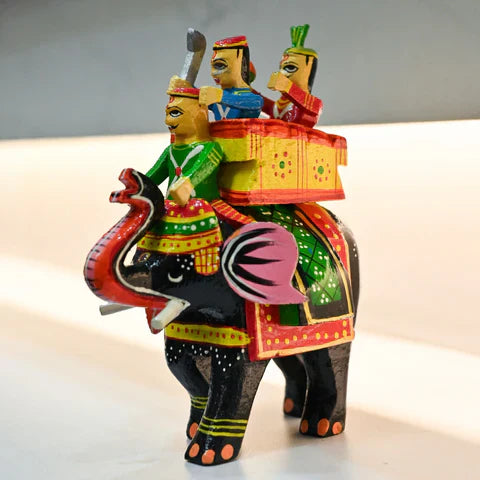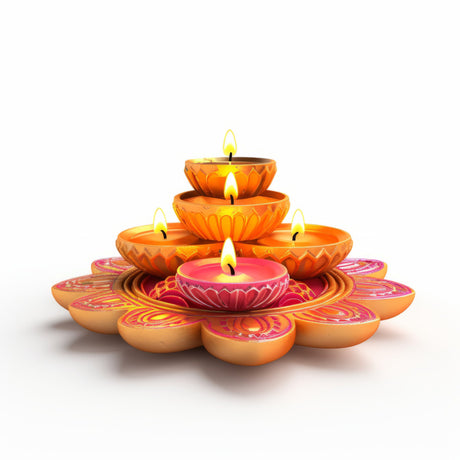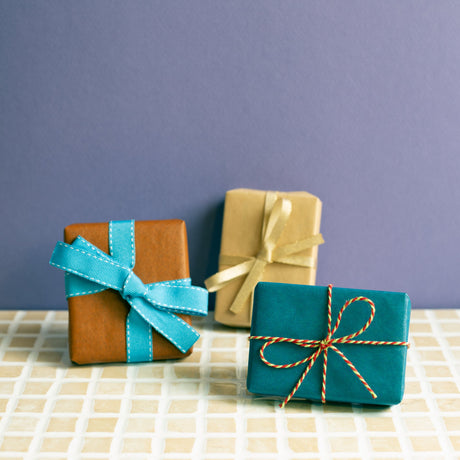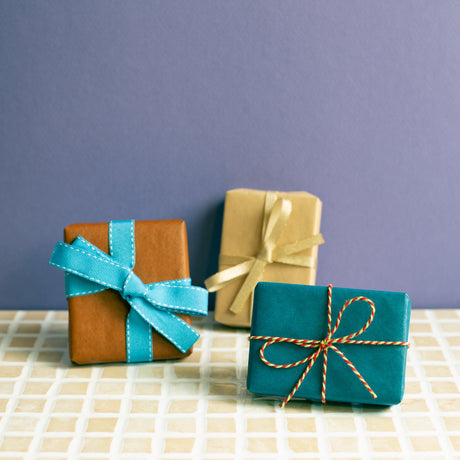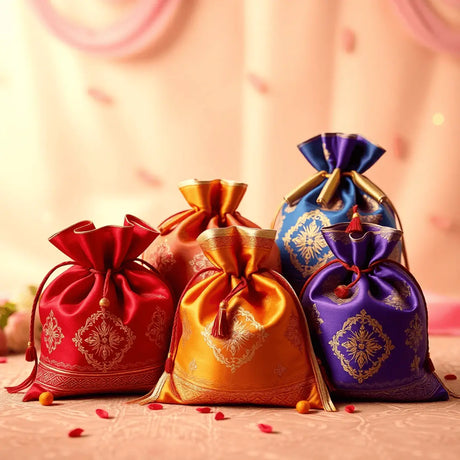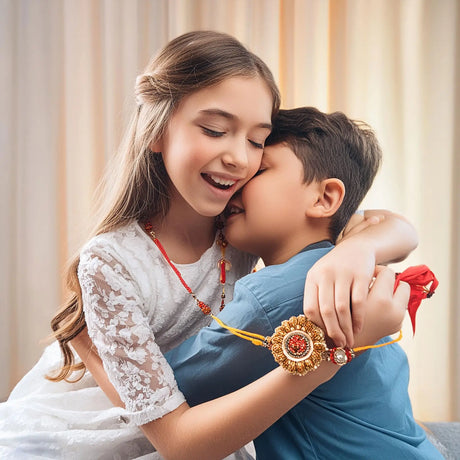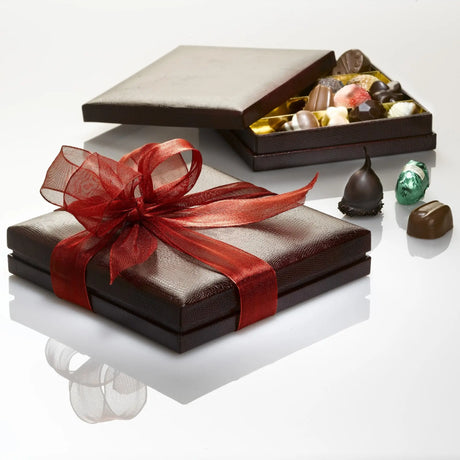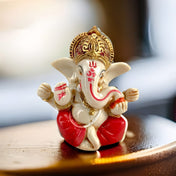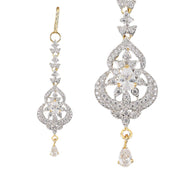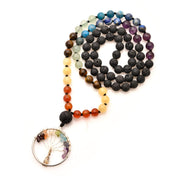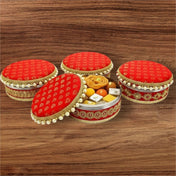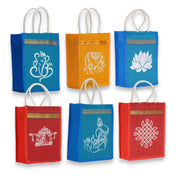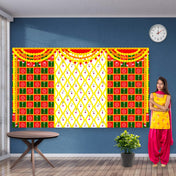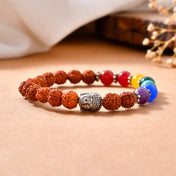Introduction
Choosing the right toys for your child is crucial in helping them grow, explore, and be creative. The search for the best wooden toys shows that parents and caregivers are becoming more aware of how playtime affects a child's development. Wooden toys for kids are becoming increasingly popular in the US, loved for their combination of traditional craftsmanship and modern appeal.
Why Choose Wooden Toys?
Wooden toys offer several advantages over their plastic counterparts:
- Durability: Wooden toys are built to last, making them perfect for energetic play and passing down through siblings.
- Safety: Made from natural materials, wooden toys are free from harmful chemicals often found in plastics.
- Developmental Support: Textures, shapes, and simple mechanics of wooden toys stimulate sensory exploration, fine motor skills, and cognitive engagement.
The Influence of Cultural Heritage
The popularity of wooden toys is also influenced by traditional craftsmanship from around the world. For example, Indian wooden toys showcase the beauty of storytelling through artisanship. These toys not only provide entertainment but also convey meaningful cultural narratives and unique designs.
One such example is the hand-painted Kondapalli groom traditional Etikoppaka toy, which serves as both a plaything and an exquisite home decor item or wedding gift.

The Allure of Hand-Painted Dolls
Another captivating aspect of Indian wooden toys is the charm of hand-painted wooden nesting dolls, known as Matryoshka dolls. These delightful gifts not only bring joy but also offer an interactive way for children to understand concepts like size and nesting.
By combining artistry with functionality, these elements go beyond being mere toys; they become cherished heirlooms that celebrate heritage while fostering a child's exploration of the world.
Why Choose Wooden Toys for Your Child?
Choosing the right toys influences a child’s growth in many meaningful ways. Wooden toys stand out with distinct advantages that support both play and development.
1. Durability and Longevity
Wooden toys have a solid reputation as durable children’s toys. Unlike plastic toys prone to breaking or warping, well-crafted wooden toys withstand years of enthusiastic play. Their sturdy construction means they often become cherished heirlooms passed down through siblings or generations, making them an investment in lasting joy.
2. Eco-Friendly and Sustainable Materials
The increasing demand for eco-friendly toys reflects growing awareness about environmental impact. Wooden toys usually come from renewable sources such as responsibly managed forests. Natural materials biodegrade more easily than synthetic plastics, reducing landfill waste. This sustainability aligns with values of nurturing the planet alongside nurturing young minds.
3. Safety Advantages Including Non-Toxic Finishes
Parents prioritize safety above all when selecting playthings. High-quality wooden toys feature smooth surfaces, free from splinters or sharp edges. Many are finished with non-toxic paints or natural oils that do not emit harmful chemicals, ensuring safe exploration even for teething infants. The absence of small detachable parts lowers choking hazards, contributing to worry-free play environments.
4. Developmental Benefits Supporting Sensory and Cognitive Growth
Wooden toys offer rich sensory experiences through varied textures, warmth, and weight, stimulating tactile senses differently than plastic alternatives. Open-ended designs encourage creativity and problem-solving skills without overwhelming children with flashing lights or sounds. Manipulating wooden blocks or puzzles enhances fine motor coordination and spatial reasoning—key cognitive abilities developing during early childhood.
“Wooden toys embody a blend of tradition and thoughtful design that nurtures children’s natural curiosity while respecting their health and our environment.”
This unique combination of durability, safety, sustainability, and developmental support makes wooden toys a superior choice among modern options available to families today.

Key Factors to Consider When Choosing Wooden Toys
Selecting the ideal wooden toys involves thoughtful consideration of several essential aspects. These factors ensure that the toys not only delight your child but also contribute positively to their growth and safety.
1. Age Appropriateness
Matching toys with a child's developmental stage is crucial for maximizing both enjoyment and learning potential. Age-appropriate wooden toys support skill acquisition while preventing frustration or safety hazards.
Babies (0-12 months)
Toys designed for infants often focus on sensory stimulation and motor skill development. Look for soft-edged, large wooden rattles, textured blocks, or natural teething rings made from untreated wood. These encourage tactile exploration and safe mouthing behaviors.
Toddlers (1-3 years)
At this stage, toddlers benefit from toys that promote hand-eye coordination, problem-solving, and basic language skills. Examples include stacking rings, simple shape sorters, and chunky puzzles. Toddler wooden toys should be sturdy with smooth finishes to withstand rough handling.
Preschoolers (3-5 years)
Preschooler wooden toys can introduce more complexity such as building sets, animal figurines, or balance boards. These enhance creativity, dexterity, and social play skills. Choosing open-ended toys allows children to invent stories and scenarios, fostering imagination.
Early School Age (6-7+ years)
Older children enjoy wooden toys that challenge cognitive abilities like intricate construction kits or educational games with alphabets and numbers. Toys reflecting realistic elements help children connect play with the real world.
Adhering to toy safety standards is imperative when selecting age-specific items. Labels indicating recommended ages provide guidance while ensuring features like size and complexity suit the developmental capabilities of different age groups.
Importance of Tailoring Toys by Age
Providing children with wooden toys by age supports developmental milestones effectively:
- Prevents choking hazards by avoiding small parts for younger children
- Encourages appropriate skill-building without overwhelming complexity
- Enhances engagement through relatable themes and manageable challenges
Parents often find toddler wooden toys particularly valuable because they are durable enough to be handled energetically yet safe enough to explore freely. Preschooler wooden toys foster independence through imaginative play aligned with Montessori principles emphasizing curiosity and hands-on learning.
This thoughtful matching between toy attributes and age nurtures a child's growth journey while respecting their evolving interests and abilities — an essential approach when choosing the best wooden toys for your child: what to look for begins with understanding developmental appropriateness at its core.
2. Safety Standards and Features
When selecting wooden toys for your child, ensuring safety standards and features are paramount for their well-being and enjoyment. Here are some critical considerations to keep in mind to guarantee the best choice for your child's needs and safety:
- Importance of smooth finishes: Opt for wooden toys with smooth surfaces free of splinters or sharp edges to prevent any injuries during playtime.
- Use of non-toxic paints or coatings: Look for wooden toys painted or coated with non-toxic materials to ensure that your child is not exposed to harmful chemicals while playing.
- Avoidance of small parts: Choose toys that do not have small parts that could pose choking hazards, especially for younger children who tend to explore objects by putting them in their mouths.
By prioritizing these safety standards and features, you can provide your child with a safe and nurturing play environment while enjoying the many benefits that wooden toys have to offer.
3. Sensory Development Benefits
Wooden toys designed with sensory development in mind offer rich opportunities for children to engage their senses and build foundational skills. The natural textures and finishes found in quality wooden toys provide a unique tactile experience that plastic counterparts often lack. This tactile learning is essential for young children, especially toddlers and preschoolers, as it fosters sensory stimulation in children through varied surfaces—smooth, rough, rounded, or grooved.

Key sensory benefits of wooden toys include:
- Tactile Exploration: Different textures encourage children to touch and feel, helping them distinguish between various materials and surfaces. This hands-on interaction supports cognitive development by enhancing awareness of the physical world.
- Hand-Eye Coordination: Manipulating wooden toys such as stacking blocks or puzzles requires precise movements. These activities promote coordination between what the eyes see and how the hands respond, a fundamental skill for everyday tasks.
- Fine Motor Skill Development: Small parts designed for age-appropriate play challenge children to grasp, pinch, and move objects carefully. These actions strengthen muscles in the fingers and hands needed for writing, buttoning clothes, and other fine motor tasks.
Choosing the best wooden toys for your child involves paying close attention to toy safety standards and selecting age-appropriate wooden toys that match developmental stages—from infant grasping toys to more complex manipulative puzzles for older children. Toddler wooden toys often emphasize larger pieces for safe handling, while preschooler wooden toys increase in complexity to support problem-solving and creativity.
Selecting sensory development toys thoughtfully ensures each playtime moment contributes meaningfully to your child's growth while adhering to critical considerations for safety and suitability. For instance, a wooden Ganesha statue can serve not only as a decorative piece but also as a unique sensory toy that engages children's tactile senses with its hand-painted finish.
4. Encouraging Open-ended Play
Encouraging open-ended play is essential for nurturing your child's creativity and imagination. When selecting wooden toys that inspire these qualities, consider options that promote exploration and versatility, such as blocks and balance boards.
1. Blocks
Wooden blocks are classic toys that offer endless possibilities for building and creating. They encourage children to think critically, problem-solve, and experiment with different structures. By stacking blocks, kids develop spatial awareness and fine motor skills while engaging in imaginative play scenarios.
2. Balance Boards
These innovative toys not only provide physical benefits by improving balance and coordination but also stimulate imaginative play. Children can pretend the balance board is a boat on rough seas, a bridge over a rushing river, or a magic carpet flying through the sky. This type of open-ended play allows kids to immerse themselves in creative narratives and develop storytelling skills.
By incorporating blocks and balance boards into your child's playtime, you foster their ability to think outside the box, explore new ideas, and express themselves freely. These versatile wooden toys not only entertain but also educate, making them valuable additions to your child's toy collection. Choose toys that spark curiosity and encourage independent thinking to support your child's growth and development holistically.
Remember, the best wooden toys for your child are not just sources of entertainment but tools for learning, discovery, and self-expression. Prioritize open-ended play experiences that challenge your child's imagination and inspire them to explore the world around them in new and exciting ways.
5. Durability and Sustainability Considerations
When selecting wooden toys for your child, it's crucial to think about their durability and sustainability. Here are some key points to keep in mind:
1. Long-lasting Nature of Quality Wooden Toys:
Wooden toys are known for being durable and sustainable, often lasting for many years. Unlike plastic toys that can easily break, high-quality wooden toys can handle rough play and be enjoyed by multiple children in a family.
2. Generational Use:
Investing in heirloom-quality wooden toys ensures that they can be passed down from one child to another, creating a sense of continuity and nostalgia within the family. These toys not only last a long time but also hold sentimental value as they carry memories of playtime across different ages.
3. Sustainable Children's Toys:
By choosing wooden toys made from eco-friendly materials, parents can contribute to a more sustainable future for their children. Wooden toys are often made from renewable resources and do not cause environmental pollution like plastic alternatives might. This choice aligns with teaching children about the importance of taking care of the environment from an early age.
When considering durability and sustainability while selecting wooden toys for your child, it is important to prioritize long-lasting quality and eco-friendly materials that benefit both your child and the planet they will inherit.
6. Alignment with Montessori Principles
Wooden toys often align closely with Montessori principles, emphasizing key aspects of the educational philosophy that prioritize a child's natural curiosity, independence, and real-world connections. Here are some essential points to consider when choosing wooden toys that resonate with Montessori principles:
1. Curiosity and Exploration
Montessori education values children's innate curiosity and encourages hands-on exploration. Wooden toys, with their tactile nature and open-ended designs, promote active engagement and discovery, fostering a child's natural desire to learn through play.
2. Independence and Self-Directed Learning
Montessori philosophy emphasizes the importance of self-directed learning and independence in children. Wooden toys that offer various ways to play without predetermined outcomes empower children to make choices, solve problems, and explore at their own pace.
3. Real-World Connections
Montessori-inspired wooden toys often mimic real-life objects or activities, allowing children to make connections between their play experiences and the world around them. These toys can range from simple puzzles to realistic kitchen sets, promoting a deeper understanding of everyday life concepts.
Incorporating Montessori principles into toy selection not only supports a child's cognitive and physical development but also nurtures their creativity, problem-solving skills, and sense of autonomy. By choosing age-appropriate wooden toys that embody these principles, parents can provide enriching play experiences that align with Montessori educational values.
7. Craftsmanship Quality
Craftsmanship quality plays a vital role in ensuring the safety and durability of wooden toys for children. Here are essential points to consider when evaluating the craftsmanship of wooden toys:
1. Sturdy Construction
- Look for toys made from high-quality wood that can withstand rough play without breaking easily.
- Ensure the joints are securely fastened to prevent any parts from becoming loose, reducing the risk of choking hazards.
2. Rounded Edges for Safety
- Prioritize toys with smooth, rounded edges to prevent accidental cuts or injuries during playtime.
- Avoid toys with sharp corners or edges that could potentially harm your child.
3. Quality Materials
- Check for non-toxic finishes and paints used on the toys to ensure they are safe for children to handle and play with.
- Opt for natural and sustainable materials that are eco-friendly and free from harmful chemicals.
4. Attention to Detail
- Evaluate the overall finish of the toy, ensuring it meets high-quality standards with no rough surfaces or splinters that could harm your child.
- Pay attention to small details like paint quality and craftsmanship precision, indicating a well-made product.
5. Certifications and Standards
- Look for wooden toys that meet toy safety standards set by regulatory bodies to guarantee they have undergone rigorous testing for quality and safety.
- Check for certifications such as ASTM International or CPSC compliance to ensure the toy adheres to industry regulations.
By focusing on craftsmanship quality, you can select wooden toys that not only provide hours of entertainment but also prioritize your child's safety and well-being. Choosing toys with superior construction and attention to detail ensures a positive play experience while promoting developmental growth in a secure environment.
Spotlight on Indian Wooden Toys in the US Market
The presence of Indian ethnic wooden toys US collections is steadily increasing, bringing a rich heritage of traditional craftsmanship gifts into contemporary American homes. Brands like LoveNspire have played a pivotal role in introducing beautifully handcrafted Indian toys to the US market, offering more than just playthings—they present cultural stories, artistic skill, and timeless values.
Cultural Significance Embedded in Play
Indian wooden toys often carry deep symbolic meanings rooted in centuries-old customs and folklore. These toys are not merely objects for amusement but serve as cultural ambassadors that connect children with India’s vibrant traditions. For example:
- Channapatna toys, from Karnataka, showcase lacquered woodwork using natural dyes, illustrating eco-friendly practices alongside aesthetic beauty.
- Hand-carved figures depicting animals, mythological characters, and everyday village scenes introduce children to diverse themes and narratives from Indian heritage.
Such designs enrich playtime by sparking curiosity about different cultures and encouraging imaginative storytelling.
Unique Designs Enhancing Play Experiences
The distinctiveness of Indian wooden toys lies in their combination of simplicity and intricate artistry. The use of natural materials paired with vibrant colors and smooth finishes creates toys that are tactilely engaging yet visually stimulating. This blend supports sensory development while appealing to young minds’ creativity.
Key features include:
- Multi-piece sets like stacking dolls or puzzle boards that improve fine motor skills.
- Musical instruments such as small drums or flutes crafted from wood, promoting auditory learning.
- Traditional figures with movable parts that invite interactive play.
These qualities help children develop cognitive skills while fostering an appreciation for handmade, authentic creations.
LoveNspire: Bridging Cultures Through Craftsmanship
LoveNspire stands out as a brand committed to preserving Indian artisanal heritage while catering to modern families seeking meaningful gifts. Their curated collection of Indian toys embodies quality and cultural pride—each piece carefully selected or crafted to celebrate India’s rich woodworking traditions.
Customers find value not only in the durability and safety of these wooden toys but also in the emotional connection they create—gifting moments that honor tradition and nurture relationships across generations.
For instance, the wooden Kondapalli Maharaja Ambari elephant toy from LoveNspire serves not just as a plaything but also as a beautiful decor item that tells a story of its origin and craftsmanship. Similarly, the hand-painted wooden Brahmin doll reflects the intricate artistry involved in creating these unique pieces.
The growing popularity of Indian ethnic wooden toys in the US highlights a beautiful synergy: time-honored craftsmanship meets contemporary lifestyle needs, inviting families to explore culture through play.
Tips for Purchasing the Best Wooden Toys Online in the US
Buying safe wooden toys online in the US requires careful attention to seller credibility and product authenticity. With so many options available in the online marketplace, it's important to have specific criteria in mind that prioritize quality and safety.
Verifying Seller Credibility and Product Certifications
When shopping for wooden toys online, here are some key factors to consider:
- Look for Registered Brands and Trademarks: Trusted sellers often operate under registered names or trademarked brands, signaling accountability and commitment to quality standards.
- Check for Safety Certifications: Certifications such as ASTM F963 (American Society for Testing and Materials) or CPSIA (Consumer Product Safety Improvement Act) compliance indicate that toys meet rigorous safety benchmarks.
- Review Seller Policies: Transparent return policies, customer service responsiveness, and clear shipping information further reflect a reliable vendor.
Evaluating Material Descriptions
It's essential to pay attention to the details of the materials used in wooden toys. Here are some aspects to look out for:
- Non-Toxic Finishes: Confirm that products use water-based paints or natural oils free from harmful chemicals, ensuring the toy is safe for mouthing and prolonged handling.
- Wood Source: Sustainable sourcing from responsibly managed forests or reclaimed wood enhances environmental responsibility while maintaining durability.
- Construction Details: Solid wood builds with smooth finishes, rounded edges, and secure joints reduce injury risks and extend the toy’s lifespan.
Leveraging Customer Reviews
Customer reviews can provide valuable insights into the performance of wooden toys beyond what is stated in marketing descriptions. When reading reviews, pay attention to:
- Durability over weeks or months of use
- Safety concerns or absence thereof
- Age appropriateness matching advertised developmental stages
- Quality of craftsmanship, including finishing touches
Positive ratings combined with detailed testimonials can help you distinguish between high-quality wooden toys and lower-quality imitations.
Exploring Personalized Gift Options in Children’s Toys
Many online retailers now offer customization options for children's toys, allowing you to create unique gifts. These options may include engraving names, selecting color schemes, or putting together themed sets based on a child's interests.
Personalized wooden toys not only make playtime more special but also foster emotional connections between children and their belongings. Additionally, they showcase traditional craftsmanship while adapting to contemporary tastes.
When purchasing personalized products, it's crucial to ensure that they meet safety standards just like any other item. Look out for certifications, transparency regarding materials used, and reputable sellers.
By following these practical tips that combine cultural appreciation, safety consciousness, and artistic expression when buying wooden toys online in the US can lead to an enriching experience for both parents and children alike.
Conclusion
By prioritizing the selection of safe and educational toys for your child, you are not only investing in their playtime but also in their overall development. When choosing the best wooden toys, consider factors like age appropriateness, safety standards, and sensory benefits to ensure a well-rounded play experience. Aligning with Montessori principles can further enhance your child's learning and creativity. Additionally, exploring Indian wooden toys can introduce cultural richness and unique designs into your child's play environment. Remember to shop from reputable sellers like LoveNspire, who offer quality and authentic products. By following best practices in selecting children's gifts, you can create meaningful and impactful moments for your child while promoting their growth and enjoyment. Choose wisely to provide your little ones with the best tools for learning and fun.

